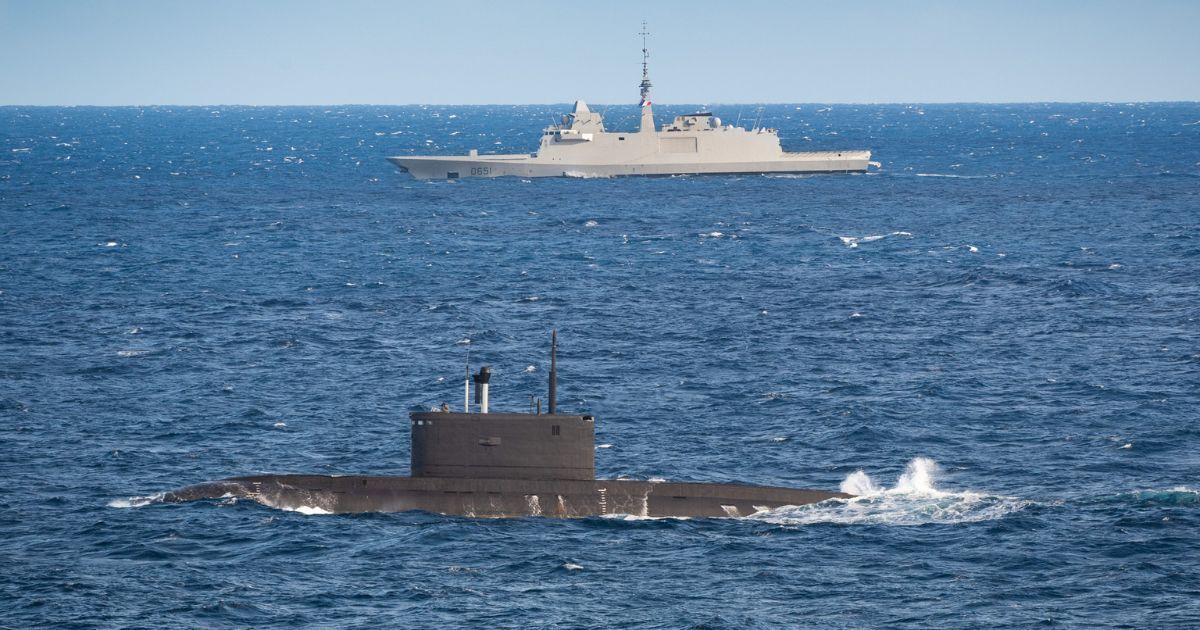In September, the French frigate Normandie, in coordination with naval forces of NATO allies such as Spain and the United Kingdom, escorted a Russian submarine and its accompanying tugboat through the Bay of Biscay.
The question, of course, is: What was the Russian submarine doing there in the first place?
We can only speculate, but there are some pretty solid grounds for speculation.
We know, for example, that Russian submarines have been training to severe underwater cables since at least 1970 — over 50 years.
In fact, the Russian November-class K-8 submarine sank in those very waters, the Bay of Biscay, during naval war games that assigned that very mission to her, according to The National Interest.
We also know that, although satellite communication and other, more recent technologies (the first transatlantic cable was laid in 1858) carry some important international communications, the backbone of global connection — CNN called it “the invisible force driving the modern internet” — remains the underwater cable.
“They carry almost all our communications and yet – in a world of wireless networking and smartphones — we are barely aware that they exist,” CNN wrote. “Yet as the internet has become more mobile and wireless, the amount of data traveling across undersea cables has increased exponentially.”
The importance of clear communications — both tactical and strategic — in a wartime scenario hardly even needs mentioning.
Finally, we note the presence of numerous undersea cables running along the bottom of the Bay of Biscay, as illustrated in this submarine cable map maintained by TeleGeography.
I’d suggest that you do the math, but I suspect you’ve already done it.
The September operation enjoyed “perfect coordination” among the NATO military branches involved, according to a tweet from “official Navy account” of France.
In September, the frigate Normandie accompanied a Russian submarine in the Bay of Biscay. A look back at this maneuver carried out in perfect coordination with our allies. ⤵️ pic.twitter.com/0rGU9G9uS8
— Marine nationale (@MarineNationale) October 13, 2022
A tweet from the official Twitter account of the Maritime Prefecture and the Atlantic Command (thank you, Google Translate) echoed that sentiment.
#Opération | 29 Sept: In close cooperation with our allies, French Navy #frigate Normandie and on-board #helicopter Caïman Marine escorted Russian #submarine Novorossiysk and tug Sergey Balk during their transit through Biscay Bay. pic.twitter.com/HdL7pP2V0H
— Préfecture maritime et commandement en chef ATLANT (@premar_ceclant) October 2, 2022
Does that mean that this Russian submarine was definitely engaged in some undersea cable-cutting exercises? Of course it doesn’t, any more than the presence of the tugboat meant that the submarine was disabled — the Russians are masters of propaganda and disinformation, and for all we know they wanted the West to know they had a submarine presence there.
But, given that the Nord Stream gas pipeline was apparently sabotaged by underwater explosions only days before this submarine was intercepted, the threat to our global communications can be ignored only at our peril.
“People are so mobile and always looking for Wi-Fi,” Byron Clatterbuck, chief executive of Seacom, told CNN. Seacom is a multinational telecommunications company that has laid many of the undersea cables that connect Africa globally.
“They don’t think about it, they don’t understand the workings of this massive mesh of cables working together.
“They only notice when it’s cut.”
Let’s hope our military leaders are paying attention a little before that happens.
This article appeared originally on The Western Journal.















 Continue with Google
Continue with Google